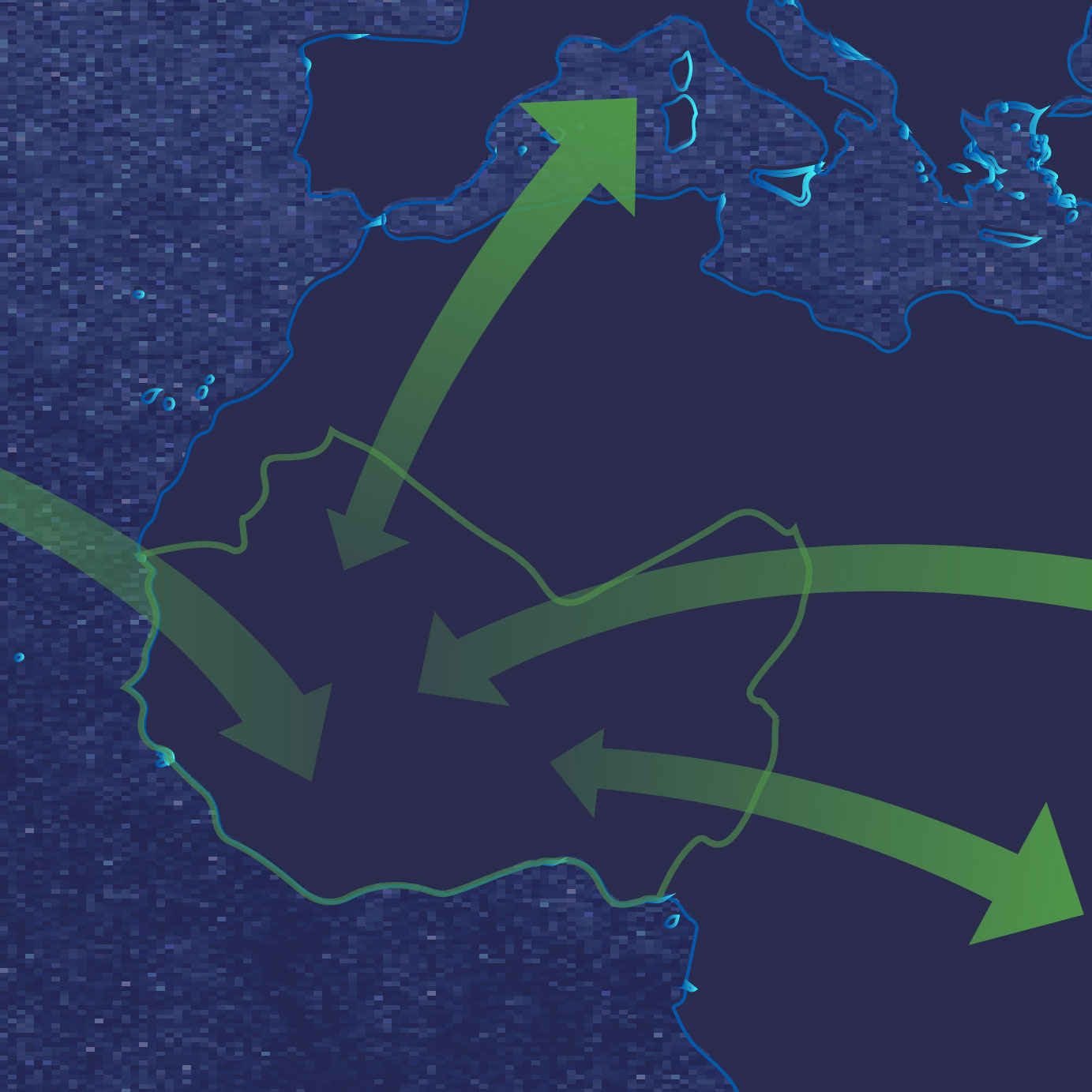West Africa

Regional Coordinator: Joseph Teye (University of Ghana)
Hub Members: For more information, please click here.
Geographic Focus: Nigeria, Ghana, Senegal and Ivory Coast, and their inter-related flows to each other, to neighbouring countries in West Africa and towards Europe and Canada
Overview
Human mobility has long been a central feature of the way of life in West Africa, a region made up of the following 16 countries: Benin, Burkina Faso, Cape Verde, Côte d'Ivoire, Gambia, Ghana, Guinea, Guinea-Bissau, Liberia, Mali, Mauritania, Niger, Nigeria, Senegal, Sierra Leone and Togo. The region experiences mixed migration, which entails cross-border movements of people, including refugees, victims of human trafficking and people seeking better economic opportunities.
While media narratives suggest an exodus of Africans to the Global North, intra-regional mobility is the dominant type of movement in West Africa, with more than 70 per cent of migrants from West African countries moving to destinations within the sub-region. Intra-regional mobility patterns have historically followed a north-south direction, with labour migrants largely moving from landlocked, Sahelian countries (e.g., Burkina Faso, Mali and Niger) to the plantation and mining communities in coastal countries, such as Côte d’Ivoire, Nigeria and Ghana. Intra-regional migration in West Africa is largely facilitated by the Protocol on Free Movement of Persons, Right of Residence and Establishment, which was adopted in 1979 by the Economic Community of West African States (ECOWAS), made up of all the countries in the region except Mauritania.
Outside Africa, a significant number of migrants from West Africa have historically migrated to Europe, North America and Australia. In response to recent strict visa regimes in popular destinations, many low-skilled West African migrants have been recruited by private recruitment agencies and individual intermediaries for job placement in the Middle Eastern countries.
While economic challenges, conflicts and environmental change have historically been identified as major drivers of migration in West Africa, recent scholarship shows that social transformation and facilitative drivers (e.g., social media and social networks) also contribute to migration from and to West Africa and within its territories.

Research focus
Internal Migration |
Nigeria & Senegal: rural to urban (2 locations) |
| Intra-regional Migration | Between Nigeria & Ghana (2 locations); From Nigeria & Ghana to Senegal (1 location, 2 migrant communities) |
Inter-continental Migration |
From Nigeria to Canada (ON) (1 location); Senegal & Ivory Coast to Canada (Quebec/NB) (2 locations, 2 migrant communities) |
| Return Migration | Canada to Senegal & Nigeria (2 locations) |
| Research Tools | Surveys/sets of interviews; thought experiments |
| New Data | Targetting for 2000 survey responses, 500 migrant & 20 expert interviews |